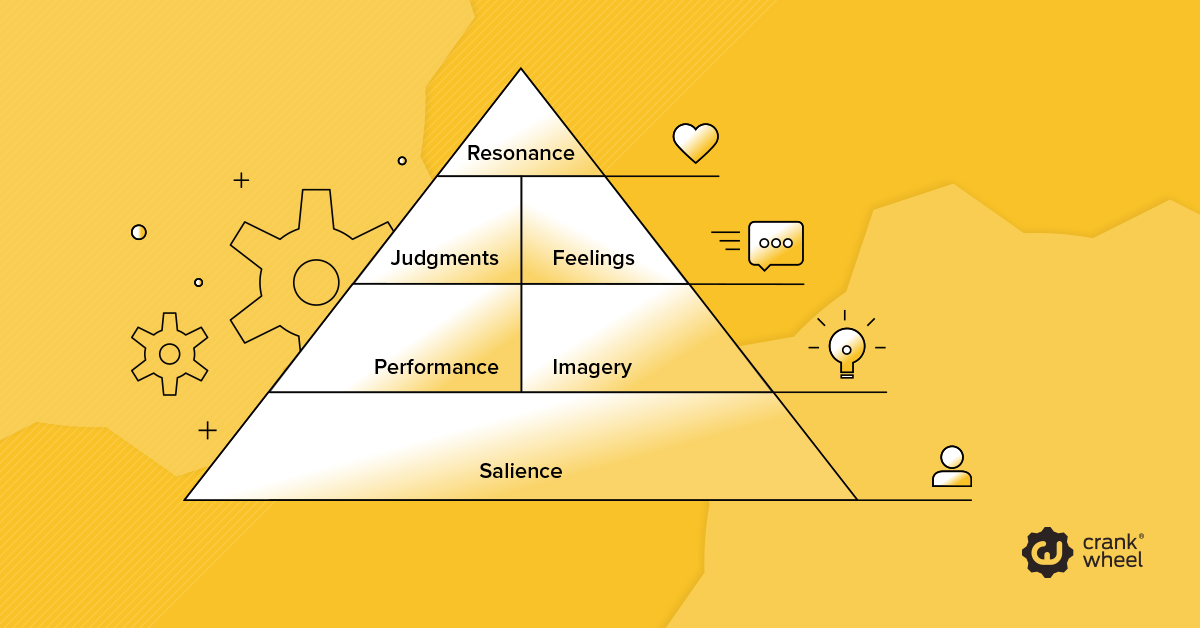How does brand equity influence B2B sales?
Every business is a brand, or has the potential to become a ‘brand’, and therefore benefit from an intangible but important part of the sales and marketing process, known as ‘brand equity.’

Branding means to leave a mark. When Vikings captured slaves, they were branded, as a symbol of ownership, property and servitude.
Now branding is a means of differentiating one company from another. In the B2C world, there are brands that are so iconic they are instantly identifiable. Logos alone, such as the Golden Arches, Nike tick, and Apple symbol, are enough to identify some of the world’s most well recognised and valuable brands.
There are some differences between B2B and B2C brands. However, the concept of being a brand, or using a company’s brand to generate sales isn’t limited to the B2C world. B2B brands can have equity too, and leverage it to increase sales and revenue. In this article, we look at how B2B brand equity can be created and used to an advantage.
What is a brand?
A brand is a singular idea or concept that you won inside the mind of a prospect.
– Al Ries
According to Philip Kotler, the definition of a brand is “a name, term, sign, symbol, or design, or combination of them”, that distinguishes and defines one company from another. A way of differentiating in the marketplace and winning new customers.
Kotler is a marketing author and scholar and was the S. C. Johnson & Son Distinguished Professor of International Marketing at the Kellogg School of Management at Northwestern University (1962-2018). He created the concept of the marketing mix and is the author of over 80 books.
What is brand equity?
Brand equity is about much more than a companies logo, colour scheme and font. This isn’t a folder confined to the Press or News section of a website. Customers don’t recognise brand equity as a concept. But they know the brands, the companies, they know and trust.
That is the power of ‘brand equity.’ Knowing and trusting a company, as a result of its products or services, branding, customer service, values, corporate social responsibility (CSR), PR, advertising and marketing activities.
Another marketing and advertising expert and author, Stephen King (1931 - 2006), who worked in senior roles in what became WPP Group, describes brand equity as: “A product can be copied by a competitor; a brand is unique. A product can be quickly outdated; a successful brand is timeless.”
In terms that can be applied practically, brand equity combines brand awareness with the relevant associations, aiming to win new customers and generate loyalty. Brand equity is holistic. Everything a company does, from marketing efforts to pricing, customer retention strategies, and the product/service, impacts the overall equity of a brand.
Brand equity is often shown to be a pyramid, based on the Keller Brand Equity Model, also known as the Customer-Based Brand Equity (CBBE) Model. Within this pyramid is the following:
- Bottom of the pyramid: Brand Salience, which answers the question: “Who are you?” In other words, brand identity and awareness.
- Lowest, widest part of the pyramid: Brand Performance and Imagery, which answers the question: “What are you?” Meaning, how a company differentiates and stands out from the competition.
- Further up the pyramid are Brand Judgments and Feelings, which answers the question: “What about you?” This refers to customer reactions to the brand equity a company has created. For example, Apple fans will feel a certain way about that brand, and usually not feel as warmly towards Samsung. That’s a reaction.
- At the top of the pyramid is Brand Resonance, which answers the question: “What about you and me?”, which refers to loyalty.
Do B2B brands have equity?
Yes, they do. Think on a huge scale: Boeing, Airbus, GE. All massive B2B brands, recognisable around the world, far beyond the sectors and industries they serve. That’s one of the outward signs of brand equity done the right way.
Brand equity makes it easier for Enterprise-level companies of that scale to win clients and talent.
Now think on a smaller scale. Are there companies in your sector known for having a great company culture? Do they win clients without seemingly trying?
Chances are, they’ve spent time and money investing in brand equity. Market-leaders and high-growth companies makes sure they cultivate and grow brand equity to support sales efforts. The good news is, any company can do this.
How brand equity influences B2B sales
Brand equity influences B2B sales in a really simple way. When more potential clients know of you, it’s easier to win customers. Inbound sales leads grow and grow. New clients come to you through word-of-mouth and referrals.
Sales teams don’t need to work quite as hard. Or they can, but sales leaders can be confident in knowing that inbound efforts are as if not more effective than outbound.
How can we create B2B brand equity?
Marketing plays a role in this, but it can’t carry everything.
In part, a business’s brand equity is built on the foundations of having high-quality products or services that customers love. Values and how a company is run play a role too. As does the overall company culture, how staff are treated, and ultimately, how well customers are looked after.
Beyond those crucial factors, marketing is important for establishing these brand values to a wider audience of potential clients. Marketing needs to promote the company effectively, which means taking a cross-channel inbound approach, building on a strong reputation, and helping to create one for less established businesses.
CrankWheel: Cut your sales cycle in half with instant screen-sharing. Go from two or more sales calls to one: Become a one call close sales team.
